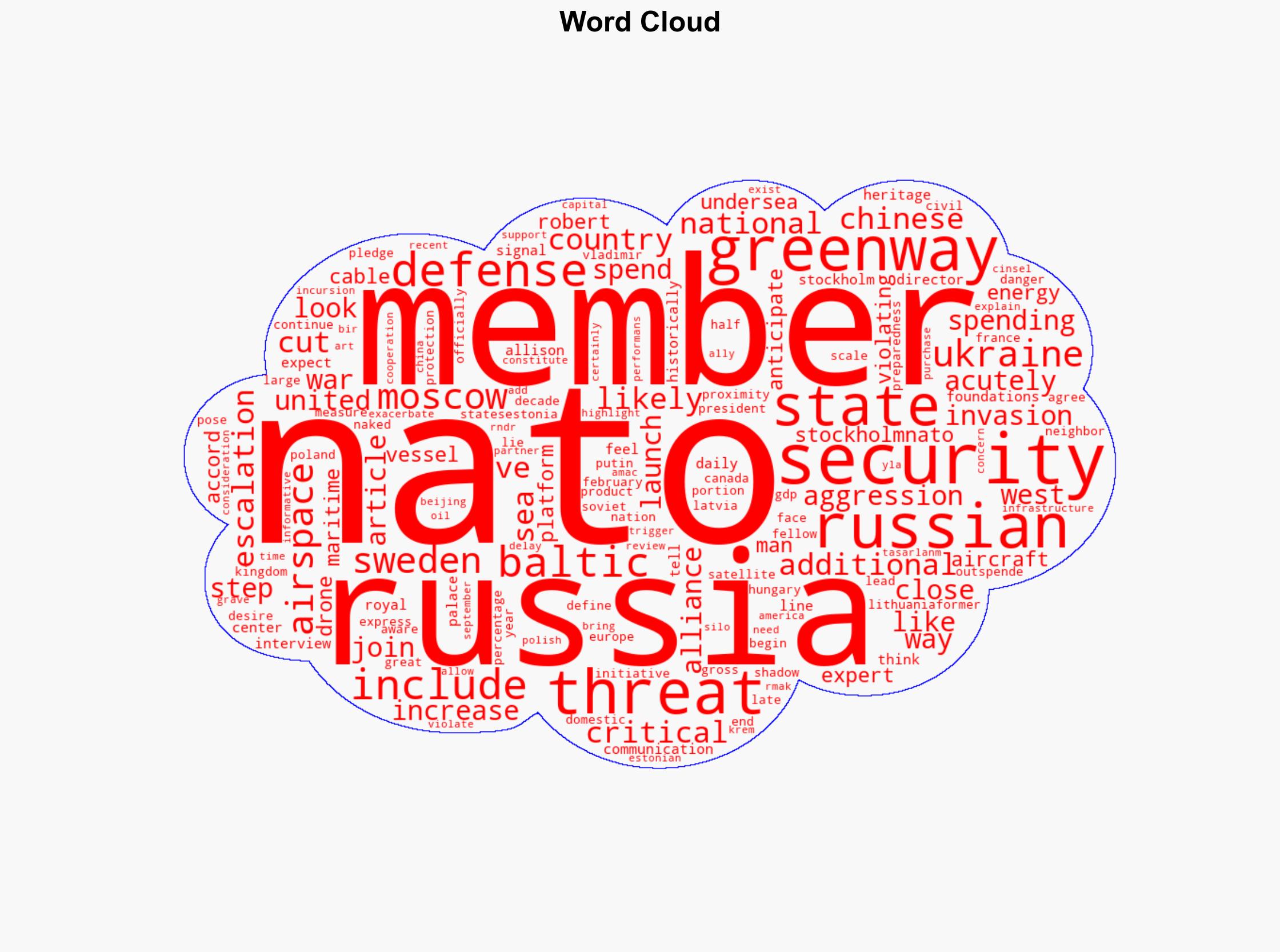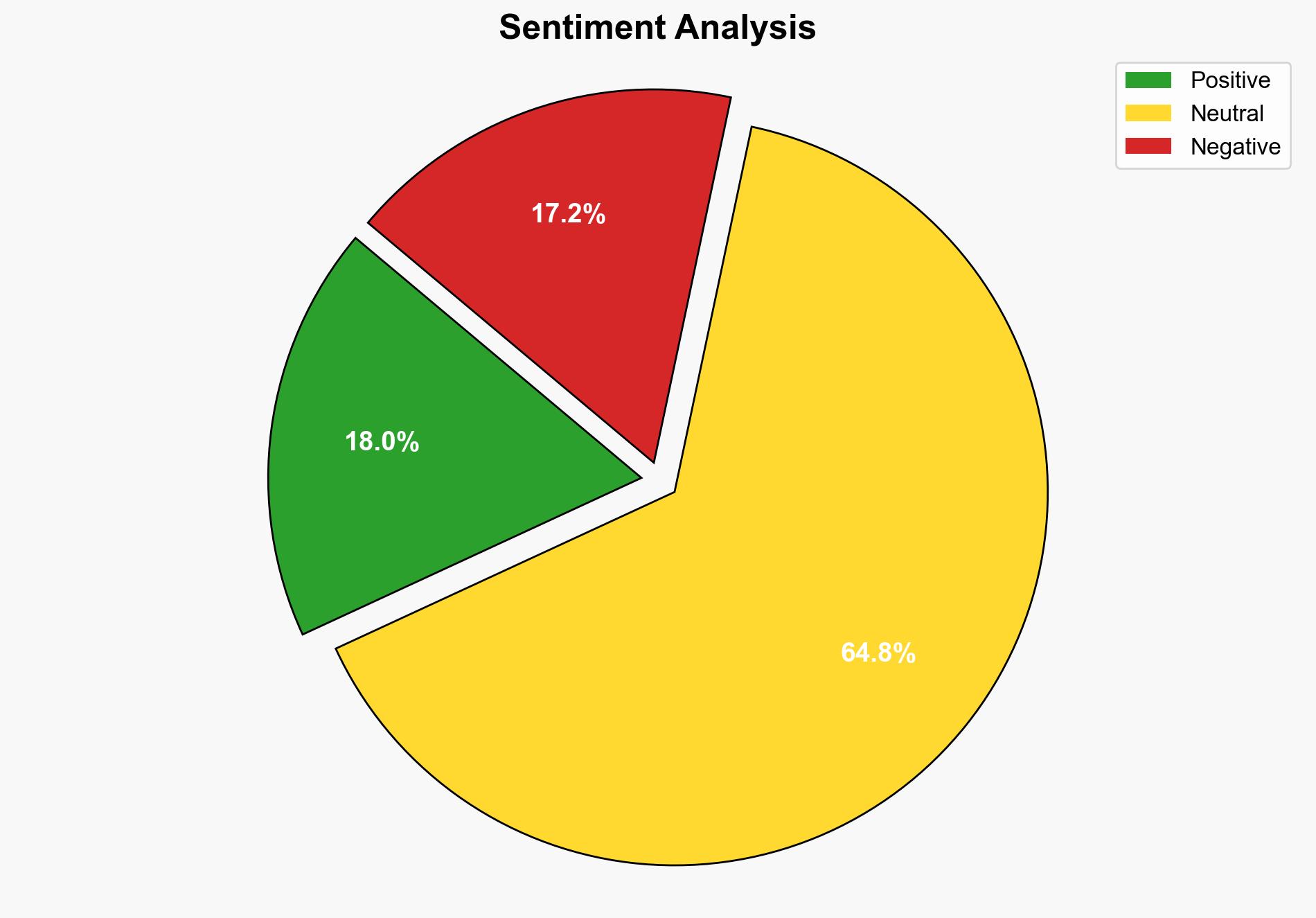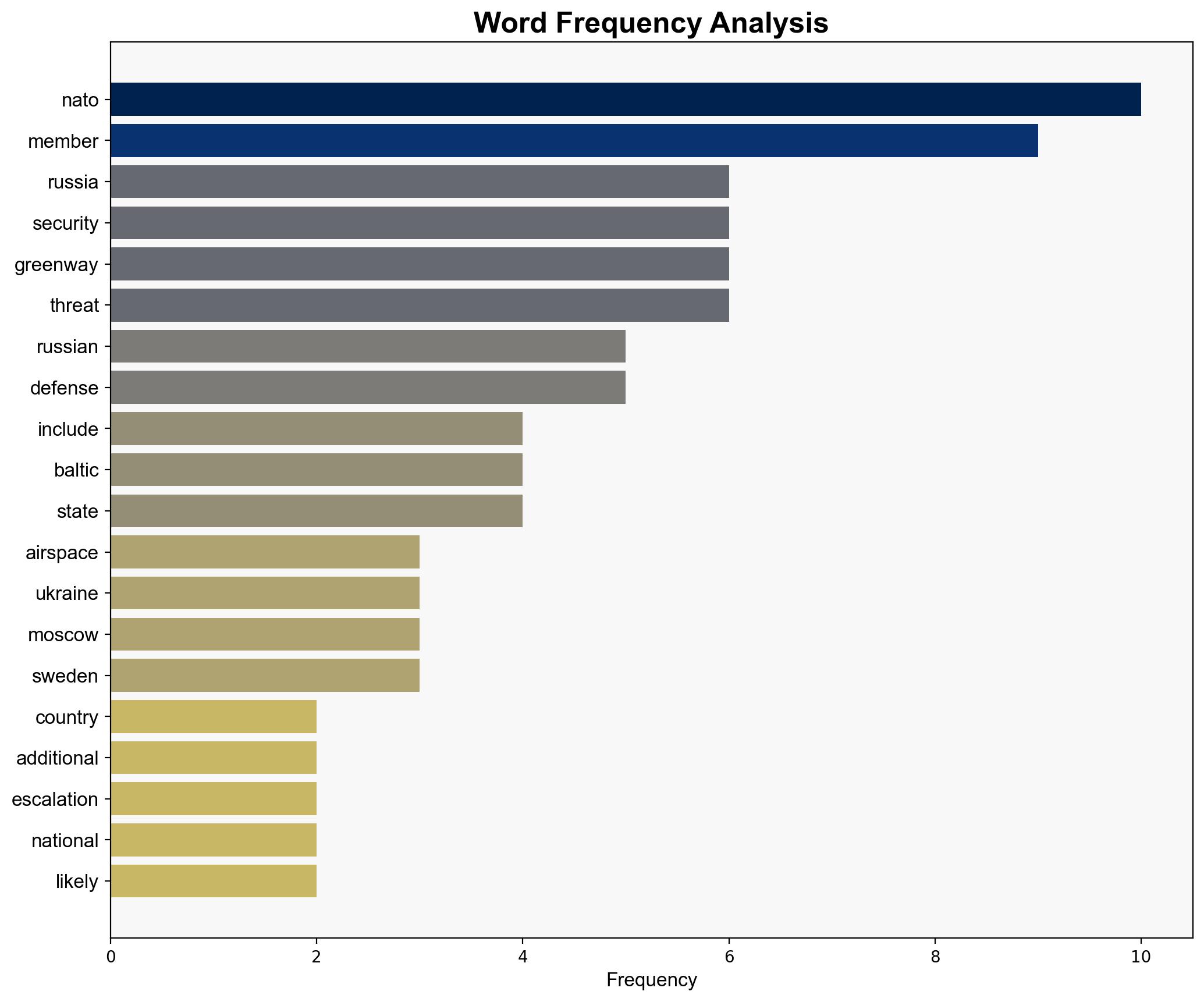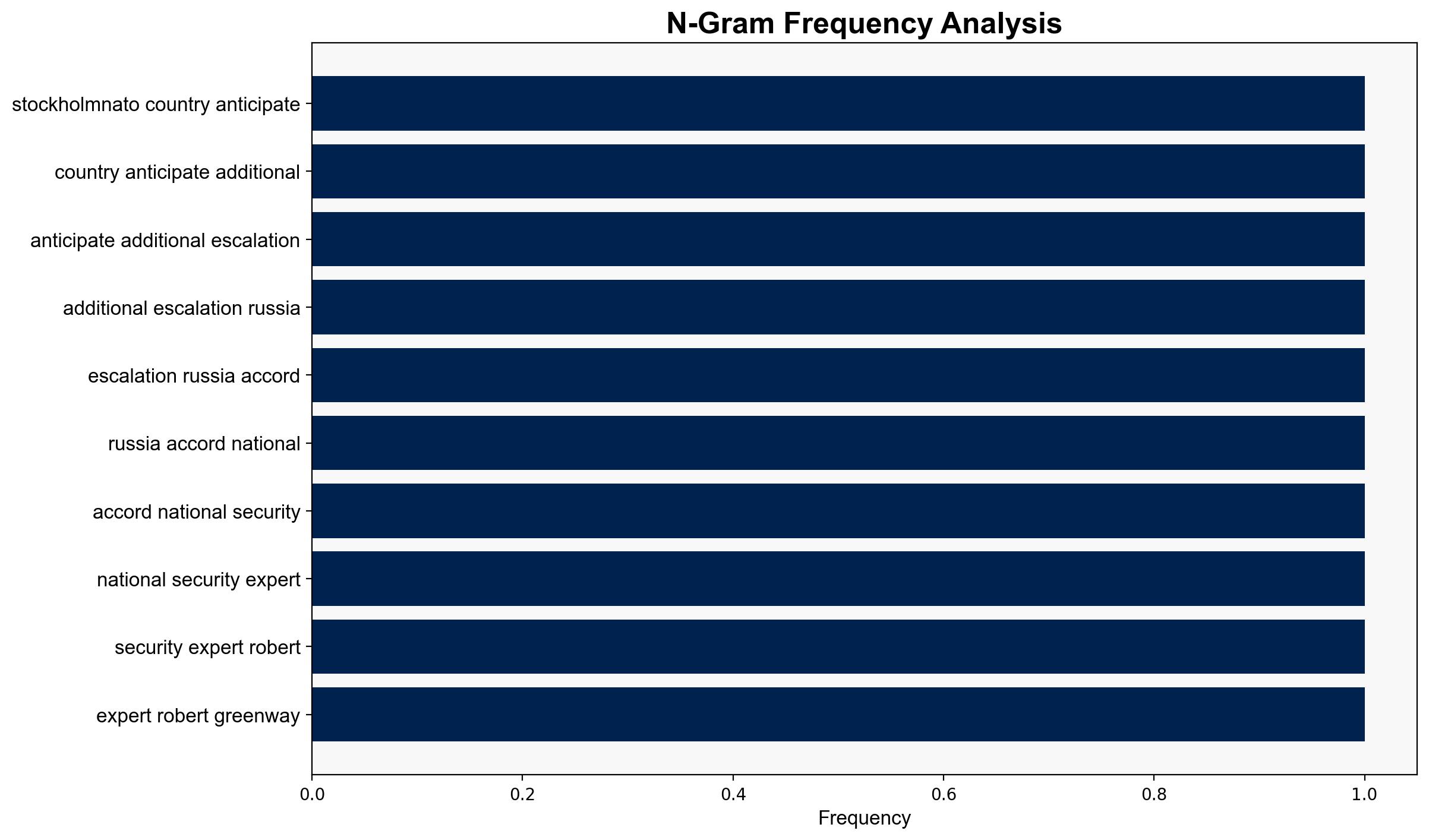How Russia Could Escalate Tensions With NATO – Daily Signal
Published on: 2025-10-10
Intelligence Report: How Russia Could Escalate Tensions With NATO – Daily Signal
1. BLUF (Bottom Line Up Front)
The most supported hypothesis is that Russia will escalate tensions with NATO through a combination of airspace violations and maritime threats, leveraging both direct and indirect means. Confidence level is moderate due to the complexity of geopolitical dynamics and potential for unforeseen developments. Recommended action includes enhancing NATO’s air and maritime defense capabilities and increasing intelligence sharing among member states to preempt and respond to Russian provocations.
2. Competing Hypotheses
1. **Hypothesis A**: Russia will escalate tensions with NATO primarily through airspace violations and maritime threats in the Baltic Sea, as suggested by recent incidents and expert analysis.
2. **Hypothesis B**: Russia will focus on indirect support to allies like China to exert pressure on NATO, avoiding direct confrontations but increasing strategic threats through alliances and economic measures.
Using ACH 2.0, Hypothesis A is better supported by recent airspace violations and maritime activities, which align with historical patterns of Russian aggression in the region. Hypothesis B, while plausible, lacks immediate evidence of coordinated actions with China that directly impact NATO.
3. Key Assumptions and Red Flags
– **Assumptions**: It is assumed that Russia’s actions are primarily driven by geopolitical strategy rather than domestic pressures. Another assumption is that NATO’s response capabilities are currently insufficient to deter these provocations effectively.
– **Red Flags**: The potential underestimation of China’s role in supporting Russia could lead to strategic blind spots. Additionally, the lack of concrete evidence of Russia-China coordination in the Baltic region is a critical gap in intelligence.
4. Implications and Strategic Risks
The escalation of tensions could lead to increased military spending and heightened alert levels among NATO countries, particularly in the Baltic region. There is a risk of miscalculation leading to unintended military engagements. Economically, disruptions in the Baltic Sea could impact energy supplies and trade routes. Cyber threats may also increase as part of a hybrid warfare strategy.
5. Recommendations and Outlook
- Enhance NATO’s air and maritime surveillance and defense systems in the Baltic region.
- Increase intelligence sharing and joint exercises among NATO members to improve readiness and response times.
- Engage in diplomatic efforts to reduce tensions and establish communication channels with Russia to prevent miscalculations.
- Scenario Projections:
- Best Case: Diplomatic resolutions reduce tensions, and NATO strengthens its deterrence without escalation.
- Worst Case: A miscalculation leads to a military confrontation, disrupting regional stability.
- Most Likely: Continued low-level provocations with periodic escalations, necessitating ongoing vigilance and preparedness.
6. Key Individuals and Entities
– Robert Greenway
– Vladimir Putin
7. Thematic Tags
national security threats, cybersecurity, counter-terrorism, regional focus





